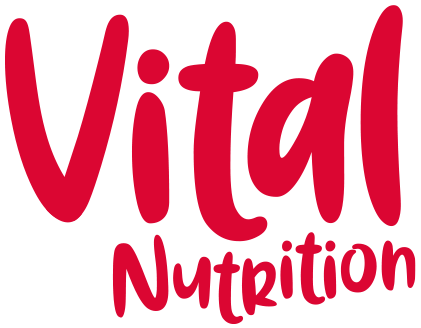Vital Nutrition for Menopause Support
October is World Menopause Month. Over the last few years there has been more focus on breaking the taboo of talking about the menopause. Some people call it the ‘Davina effect’, thanks to Davina McCall being so open and honest about her experiences at menopause.
The average age for women to hit menopause is 51. Menopause is defined as the time when a woman hasn’t had a period for 12 months. Usually when we talk about menopause, we are talking about the years before this (known as perimenopause), when hormones start to change.
Plenty of women sail through menopause without too much trouble, but for others it can be debilitating. With symptoms as diverse as anxiety and low mood, to joint pain and fatigue, menopause is so much more than night sweats or hot flushes.
Nutrition and exercise have got to be part of our toolkit at this stage in life to help us manage our health and support hormone balance.
You may have noticed that food affects you differently – maybe you are more sensitive to certain foods, or can’t handle sugar, caffeine or alcohol like you used to.
The great thing about changing your nutrition is that it is something that will really make a difference to how you feel. With so much conflicting advice, it can be hard to know how to start, so let me give you some common-sense advice about positive changes you can make at perimenopause to adapt to your body’s changing needs.
Prioritise protein. As hormones start to change, we are at increased risk of sarcopenia (muscle loss) and osteopenia (bone loss). This is why we need to make protein a top priority now. Although the advice varies, it is recommended that we aim to eat 1.2g protein per kg body weight (compared to 0.75g when we ae younger, although there is much debate on whether this is sufficient). You can use an app like myfitnesspal to work out how much this means for you. For most women it will mean aiming for the equivalent of 25-30g protein at each meal. On your plate, that will mean a decent sized fillet of fish or chicken, a 3 egg omelette with feta or cheddar or some Skyr yoghurt with chia, flax and berries as an example.
Pile in the phytoestrogens. Phytoestrogens are plant-based hormone balancing compounds found in foods like flaxseed, chickpeas and lentils. Aim for a tablespoon of flaxseed a day. Local brand, Linwoods have a new product called Menoligna that has higher levels of lignans – that’s the active phytoestrogen found in flaxseed. Add more chickpeas into your diet – so eat more houmous, add chickpeas to your curries or pop some bean salad into your basket for lunchtimes. Lentils are great too, and it is the time of year for lentil soups, stews and comfort food packed with pulses.
Eat more healthy fats. Along with protein, essential fats (omega 3 and 6) are critically important for hormone balance at menopause. This is not a time to follow a low-fat diet. Fats help to support cardiovascular health, manage inflammation, keep our joints healthy and are the building blocks for oestrogen and progesterone. Aim to eat oily fish a couple of times a week, get those flaxseeds in every day and add more olive oil to your diet.
Cut your sugar. One of the knock-on effects of changes to oestrogen and progesterone is the impact it has on our insulin sensitivity. When oestrogen levels decrease, we can become more insulin resistant, which means we can’t handle sugar or white, refined carbs like we used to. This can lead to an increased risk of type 2 diabetes, high cholesterol and blood pressure, as well as weight gain around the middle. If you want to lose belly fat, then go as low as you can go with your sugar intake.
I have lots more to tell you on this subject, but if you get these things right then you will be off to a good start.

